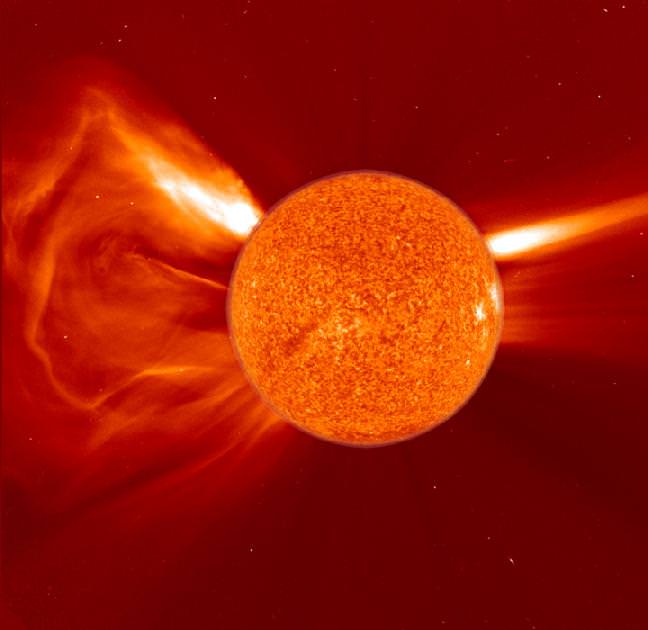[/caption]
Sun-worshiper alert! Now you can have the chance to help scientists spot and track solar storms and be involved in the latest solar research. The ‘hottest’ new Citizen Science project from the “Zooniverse” is Solar Storm Watch. Volunteers can spot storms and track their progress as they hurtle across space towards our planet. Your “clicks” and input will help solar scientists better understand these potentially dangerous storms and help to forecast their arrival time at Earth. “The more people looking at our data, the more discoveries we will make,” said Dr. Chris Davis, Project Scientist with the STEREO mission. “We encourage everyone to track these spectacular storms through space. These storms are a potential radiation hazard for spacecraft and astronauts alike and together we hope to provide advanced warning of their arrival at Earth.”
Solar Storm Watch has been in Beta testing for about two months, but is now officially open for business. “It’s been wonderful to watch the team get ready for a flood of data,” said Chris Lintott, one of the founders of the original Galaxy Zoo, and now Zooniverse — new citizen science projects that that use the Galaxy Zoo model — of which Solar Storm Watch is a part. ” I’m sure there are discoveries there already.”
“I’ve been sitting at my desk watching the results roll in and there are plenty of CMEs that just need a few more clicks,” said Arfon Smith from Oxford University, one of the developers of Zooniverse, who has helped solar astronomers at the Royal Observatory in Greenwich integrate their science projects into the Galaxy Zoo model.

The project uses real data from NASA’s STEREO spacecraft, a pair of satellites in orbit around the Sun which give scientists a constant eye on the ever-changing solar surface. STEREO’s two wide-field instruments, the Heliospheric Imagers provide Solar Stormwatch with its data. Each imager has two cameras helping STEREO stare across the 150 million kilometers from the Earth to the Sun.
“The Solar Stormwatch website has a game-like feel without losing any of the science,” said Julia Wilkinson, Solar Stormwatch volunteer. “I can click away identifying features and watch solar storms head towards Earth on the video clips and learn about solar science at the same time. It’s fun, it’s addictive, it’s educational and you get to contribute to real astronomy research without being an expert in astrophysics … The fact that any Solar Stormwatch volunteer could make a brand new discovery about our neighboring star is very cool indeed. All you need is a computer and an interest in finding out more about what the sun is really like. Solar astronomy has never been easier!”
Solar Storm Watch has made their project very interactive with social media, as you can share your discoveries on the user forum and Flickr, as well as follow the space weather forecast on Twitter. SSW also has a blog to shre the latest news and challenges.
To participate, go to the Solar Storm Watch website. You can get a “Mission Briefing”, or watch informative videos on why the solar science community needs you!
Sources: Royal Observatory, Zooniverse

